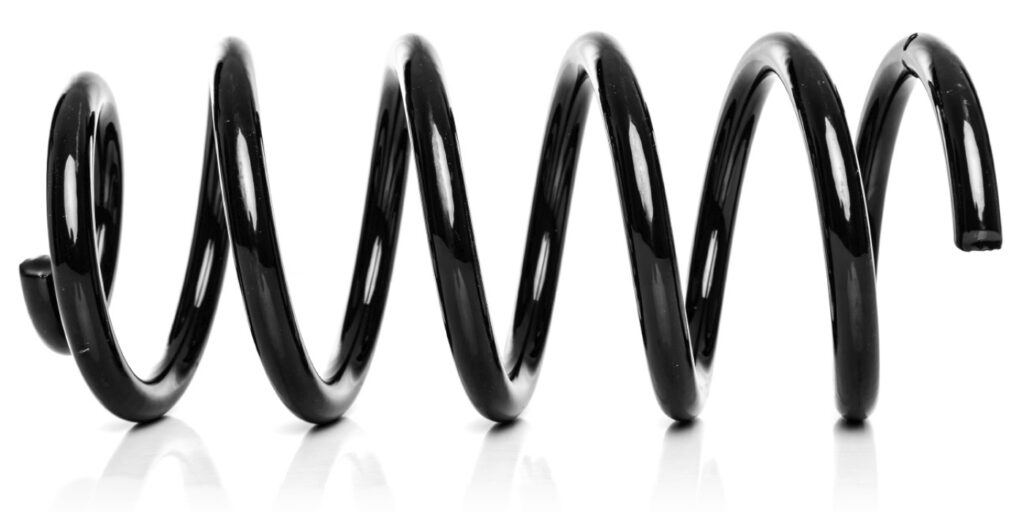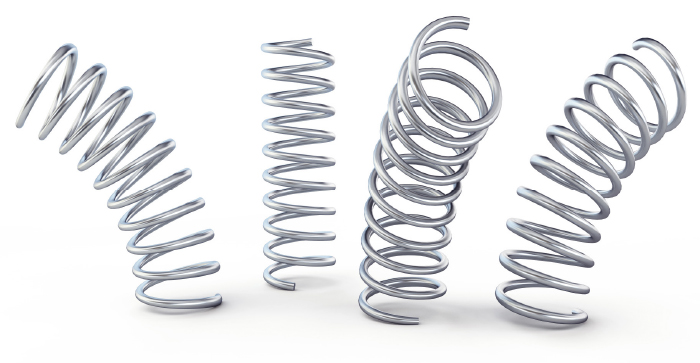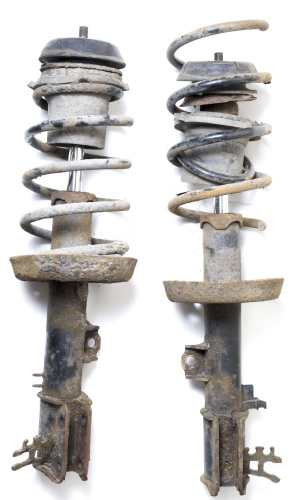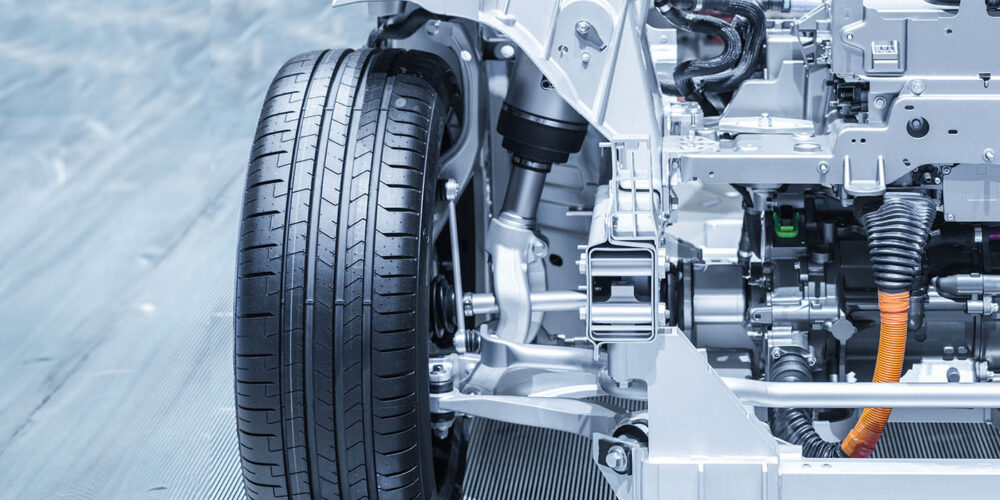A spring’s design is tuned to many factors. Engineers will use terms like frequency and amplitude to describe spring construction. For the layman, these terms translate to how fast and how far the spring must travel. Frequency and amplitude are tuned for ride quality, center of gravity and the sprung weight of the vehicle.
A dampener is not a spring, and a spring is not a dampener. When a spring is compressed, it stores the energy and releases it. When a dampener is compressed, it absorbs the energy and changes it into heat. It is a controlled reaction where the forces are matched to keep the tire in contact with the road. The specifications for the spring and strut are linked. When one component is worn, it impacts the other.
A spring’s specifications go much further than a pounds per inch rating. Springs are an engineering masterpiece on some modern vehicles. Engineers can change the spacing and pitch of the coil to generate different spring rates depending on how compressed the suspension. They can also control the geometry of the spring to prevent sideloading that could cause a strut binding.
Springs are also a safety item that can influence the stability of the vehicle. However, there are no safety tests specific to springs. Instead, federal safety regulators test complete vehicle. These technology-neutral standards allow for different technologies like air springs and active dampening.
Tests like FMVSS 135 involve accelerating to 40 mph and having a robot apply the brakes and turn the wheel to simulate an emergency lane change. To pass the test, the vehicle can’t roll or spin out. The test is an evaluation of the brakes, electronic stability control and suspension. All items must work together to pull off the maneuver. If the vehicle can’t pass the test, it can’t be sold.
The factory spring is designed to last many cycles and should outlast the first set of struts or shocks for most vehicles. Replacing the original spring in favor of an inexpensive loaded strut might improve the dampening, but it could be a downgrade for the spring.
WHY SPRINGS NEED REPLACEMENT
On some high-mileage vehicles, when the struts are replaced, the performance of the springs no longer matches that of the new strut. When a new strut is reassembled with the old and tired spring and strut plate, the results can be less than desirable.
Upper strut mounts and bearings can be hammered to death. The upper strut mount essentially supports the vehicle weight and counters both braking and acceleration torque. Unfortunately, most mounts are sandwiches of rubber, metal and bearings. Over time, the rubber can lose its ability to isolate the suspension from the body. Bearings can also seize and bind, causing vehicle steering problems.
Tire wear, steering and handling can also be affected by ride height and the spring’s health. If the chassis is sagging on one side or in the front or back, weak springs are the likely cause. Weak springs can affect both camber and caster, resulting in a steering pull, a change in steering effort or return and/or uneven tire wear.
Look up the ride height specifications and measure ride height in the front and rear and on both sides of the vehicle. If the ride height is less than specifications, the problem is most likely one or more weak springs that should be replaced. Springs can be shimmed, but the best fix is a new replacement. Springs should usually be replaced in pairs to maintain the same ride height side to side.
Weak springs are also more likely to fail when a new strut or shock is installed. The springs on many late-model vehicles are thinner to reduce weight and have an outer plastic coating to protect the metal from corrosion. If this outer coating is cracked or damaged, corrosion can form a hot spot that eats into the spring, weakens it and eventually breaks.
The health of the springs has a direct effect on the headlights, even on vehicles without self-leveling headlights. If the ride height is down in the front, the headlights’ beam pattern will not project far enough. If the rear height is down, the headlight pattern could be pointing at the sky and into the eyes of oncoming drivers.
The stability control system measures the effectiveness of its correction made with the brake system. How effective the correction depends on the condition of the contact patch of the tires. What influences the health of this contact patch is the dampeners and springs. The computer does not assign a value to the condition of the contact patch, and there are no parameters (PIDs) in the programming for most systems. The corrections and the effectiveness of those moves are measured by the sensors. The ESC system will try to make the smallest correction at first, and then it will escalate the corrections until the sensor and driver inputs indicate that the vehicle is back under control. If the traction level is optimal, it may actuate a dump or isolation valve for a small amount of time. If the contact patch is compromised due to a weak shock or strut, the correction may take a little longer.
















